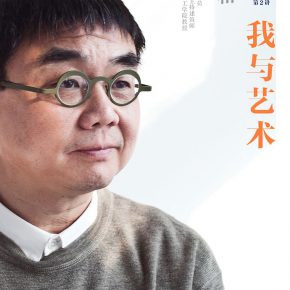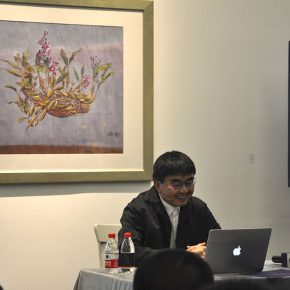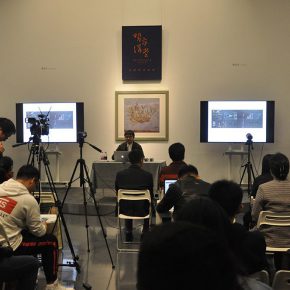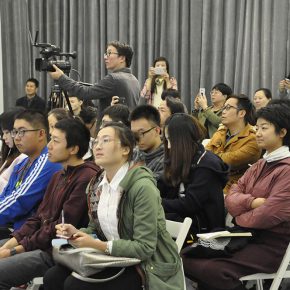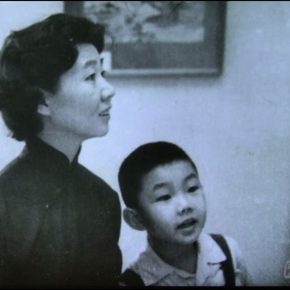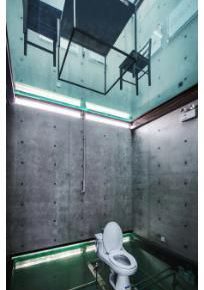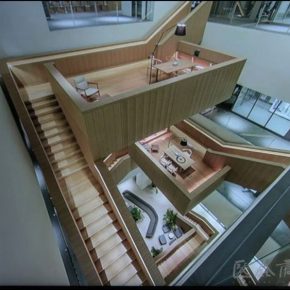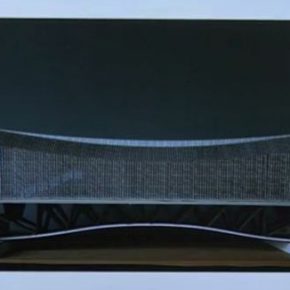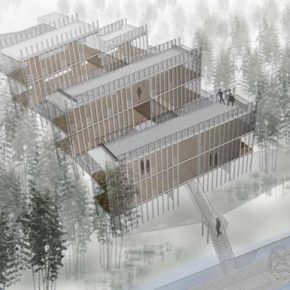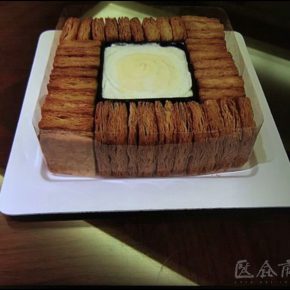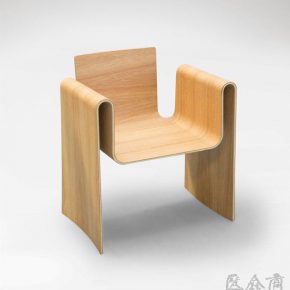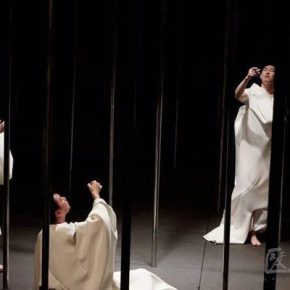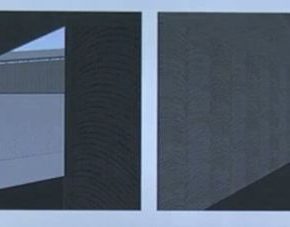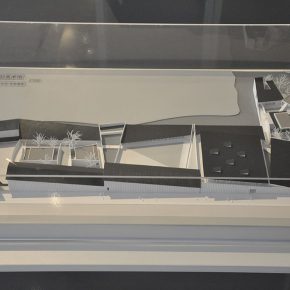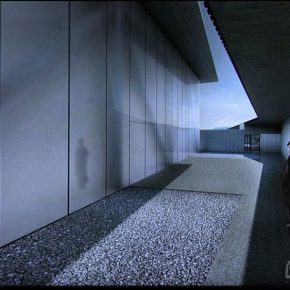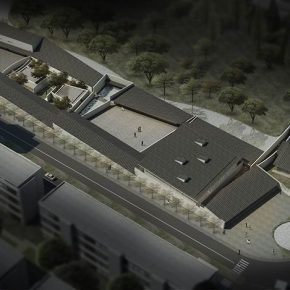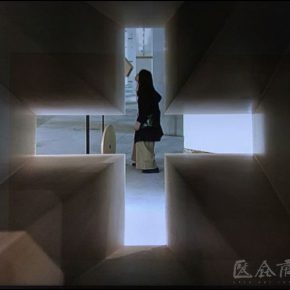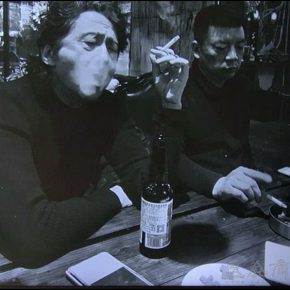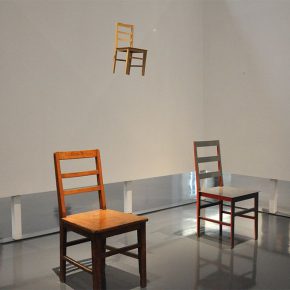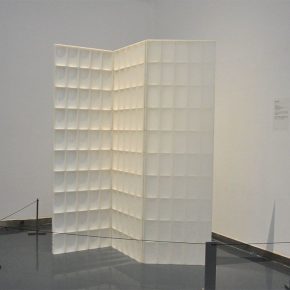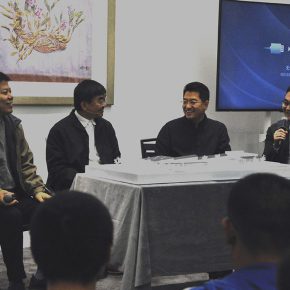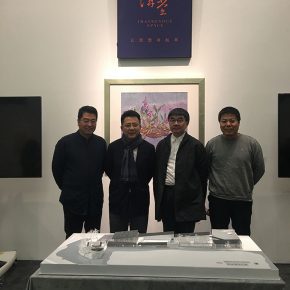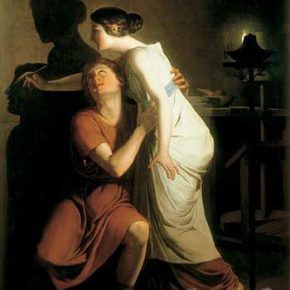
On September 27, 2017, “Art Exhibition of Elegant Items of Ingenuity 2017” opened at the Shixiang Art Space, art pioneers Zhang Guangyu, Wu Dayu, Zhu Danian’s elegant works are brought together, and it also invites contemporary artists including Zhang Yonghe, Bian Pingshan, Xu Lei, Lin Yan, Xu Xu, Gao Zhenyu, Yang Kui and Qiu Ting, to present their newly created paintings, installations, furniture, ceramics, utensils, tea table, etc., commonly used in a contemporary home and public space. On the occasion of the exhibition, the Shixiang Lecture Hall II invited the participating artist and famous architect Zhang Yonghe to give a lecture on “Art & Me” in the Shixiang Art Space on October 15. The famous architect Zhang Yonghe has explored the relationships between painting and architecture, man and space by extracting some enlightening cases from classical & modern art history and architectural history.
On the relationship between painting and architecture, Zhang Yonghe has his own understanding. He said that, the perspective of the early Western painting made people aware of the space while he also had an awareness of his own position. On the basis of drawing tools, a perspective method has been applied to the construction of classical cities, to achieve the conversion from the image to the building. In the 18th century, when German architect and painter Friedrich Schinkel created the “Origin of the Painting”, he said that there was a painting and then a building, therefore the origin of the painting was outdoors. It showcases that painting has become a tool for the research of building.
In the times of modernism, Mies Van der Rohe through painting and building was able to explore the incomprehensible motif in the painting – transparency, the glass of the abstract consciousness was reduced to material, and this design has been sacrificed for the privacy of the building. Zhang Yonghe designed the “vertical glass house” in order to criticize the idea of horizontal transparency, to explore the transparency of the vertical aspect of the building. It is a contemporary urban residential prototype, and Zhang Yonghe considers this house as the residence of the celebrity Liu Ling of the Wei and Jin Dynasties, because the vertical glass house could help him achieve the fact of “taking heaven as a building and taking an house as clothing.”
Architecture is different from the painting as it is based on abstract thinking and aesthetics, and the building needs to consider macro issues, including engineering problems, material problems. The design of Pudong Zhangjiang Hi-Tech Park, Shanghai changes an urban space to the park space, on the one hand, it considers spatial constraints to pursue the practical, on the other hand, it is a culture; the Oriental courtyards of the design take the traditional, Chinese, and Asian space as a research & developmental center for an international pharmaceutical company; while the interior design fully considers how people exchange and cooperate. Jishou Art Museum, Hunan, has a relation with the urban infrastructure, so it is both a museum and a bridge.
Zhang Yonghe believed that the argument of “Oriental-West Relationship” is a very imperfect description of the world. On the one hand, contemporary globalization has made the Oriental and Western boundaries blurred; on the other hand, seen from an architectural perspective, the so-called Western is actually the North, such as New York and Frankfurt and so on. In fact, it is not a relationship between the Orient and the West, but the relationship between the South and the North. The spatial quality of the northern cities is different from the southern cities. Zhang Yonghe started from this point to design four kinds of space, creating an unique spatial organization of a building which is suitable for the subtropical area.
Zhang Yonghe’s experience of studying abroad has made him interested in Western modern paintings. The founder of the conceptual art Marcel Duchamp’s work entitled “Big Glass” also reflects his profound understanding of the materials. Art, architecture and design are unified, commonly facing the material world. The architect is a participant in the natural material world and a creator to a certain extent, Zhang Yonghe is an architect, and he enjoys art. He has been involved in cake design, home design, stage design, costume design, etc., but he has never thought of it as cross-border, he is also interested in the material world like many people who are interested in the spiritual world.
Wu Dayu Art Museum is a building for painting. As the unique pure architectural space in China, the use and function is disjointed with the space, while it seems that Wu Dayu Art Museum extends or shortens the time through a series of courtyards. Zhang Yonghe has never repeated the tradition, but he is based in the contemporary to attempt to reshape the tradition. Although he introduced the structure of the traditional courtyard, it started from his own problems of building and space. The sculptures by Zao Wou-ki, Wu Dayu, and Wu Guanzhong are placed outside the art museum, offering an opportunity to the audience to dialogue with the masters. The art museum becomes a garden, which blurs the relationship between the inside and outside, offering a garden to the viewer that he can freely visit.
The significance of architecture and painting does not only lie in its instrumental use, while the architecture and painting enter the narrative through contemporary picture books. “Picture Book of Fei Chang Jian Zhu” published by Tongji University Press, contains 31 representative works of the Fei Chang Jian Zhu architectural office over twenty years, which are like posters where each picture has an unique clue. Perhaps the individual figures and the traditional pictures are the same, but the change from the organizing method of visual information makes it become a narrative, while the narratives show how to design a house or a project.
Zhang Yonghe has loved art over a period of time, so that he is not limited to the identity of the architect, and he paints as he loves painting. He has shown a series of works of creation, including facsimile, oil painting, drawing, water-soluble color pencil, photography, installation, picture books, etc., and even talked about a semi-finished screenplay. He is broadly interested in various fields of art, for him, “it is not important what he does and I can’t give up the relationship with art, which is the most interesting thing in life, as this is my relationship with the art.”
After the end of the lecture, the founder of Shixiang Art Space Li Dajun, the cultural scholar Yang Kui, founder of the zaiart APP Xie Xiaodong were invited to have a discussion with the speaker Zhang Yonghe. Jiang Jianning, Chairman of Yada, and artist Lin Yan who attended the lecture.
Text by Wu Huixia, translated by Chen Peihua and edited by Sue/CAFA ART INFO
Photo by the organizer


